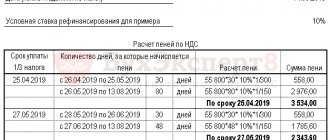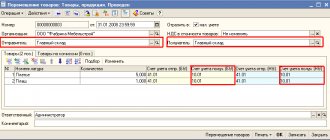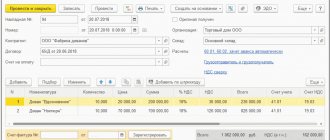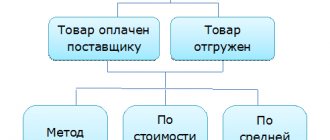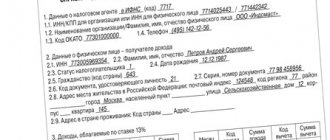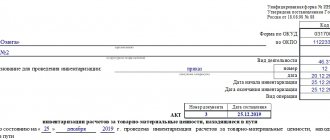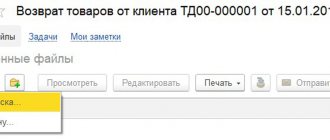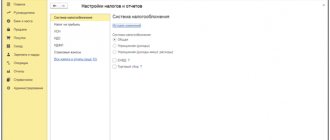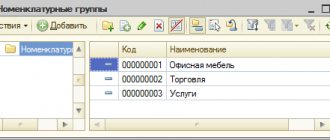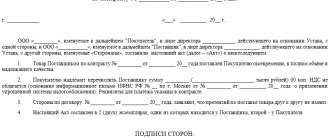Importing goods from foreign countries is associated not only with settlements with a foreign supplier, but also with settlements with customs. When processing import transactions, many questions may arise.
Let's look at how in 1C 8.3 Accounting:
- capitalize imported goods;
- fill out the customs declaration for import .
For more details, see the online course: “Accounting and tax accounting in 1C: Accounting 8th ed. 3 from A to Z"
Step-by-step instruction
The organization entered into a contract with the supplier Galaxy LLC for the supply of goods from Germany in the amount of 20,000 EUR.
On March 11, an advance payment in the amount of 10,000 EUR was made.
On March 19, the supplier Galaxy LLC shipped the goods Lathe IM-1 (1 pc.) worth 20,000 EUR. The transfer of ownership of the goods occurs at the moment the goods are transferred by the carrier to the buyer’s warehouse. Delivery basis - DAP Moscow.
On March 27, advance customs payments were made (VAT - 315,000 rubles, duty - 75,000 rubles, fee - 750 rubles).
On March 29, customs declaration of goods was carried out. The machine was delivered to the warehouse and accepted for accounting.
Conditional courses for example design:
- March 11 — the rate of the Central Bank of the Russian Federation is 73.00 rubles/EUR;
- March 29 — the rate of the Central Bank of the Russian Federation is 75.00 rubles/EUR.
Transfer of an advance to a foreign supplier
List the advance payment using the document Write-off from the current account, transaction type Payment to supplier in the Bank and cash desk section – Bank – Bank statements.
Please indicate:
- Bank account - foreign currency bank account in EUR;
- VAT rate - Without VAT .
Postings
Transfer of payment to customs
List the customs payment in the document Write-off from the current account type of transaction Other settlements with counterparties in the Bank and cash desk section - Bank - Bank statements.
The transfer of customs payments can be made in two payments: one for the payment of VAT and customs duties, the second for the payment of duties. This is due to the use of different BCCs when processing payments.
Read more Payment of VAT at customs when importing from third countries
But the overall filling will be the same:
- Agreement - basis for settlements, Type of agreement - Other ;
- Settlement account - 76.09 “Other settlements with various debtors and creditors.”
VAT and tax
Postings
Duty
Postings
Capitalization of imported goods in 1C 8.3
Receive goods from third countries using the document Receipt (act, invoice) transaction type Goods (invoice) in the section Purchases – Purchases – Receipt (acts, invoices).
Please indicate:
- Invoice No. from - data of the primary document, for example, invoice No. and date;
- from - date of transfer of ownership.
Fill out the table with the purchased goods.
- % VAT - Without VAT ;
See also How to correctly indicate the customs declaration and the country of origin of goods when importing
Postings
See also New “import” documents in the Federation Council (from the recording of the broadcast on December 21, 2021)
Box 11
The requisite in column 11 of the basis document for VAT calculations in 2018 became mandatory (a dangerous SF requisite).
The registration number of the customs declaration in accordance with Government Decree No. 981 of 08/19/2017 must be indicated in column 11 of the tabular part of the document. The name of the column has undergone changes - the word “registration” has been added to the previously used name. Now the wording of the name of column 11 is “Registration number of the customs declaration.”
Customs declaration for import into 1C 8.3 Accounting
The customs declaration of goods is reflected in the import customs declaration document in the section Purchases - Purchases - import customs declaration. Create it based on the document Receipt (act, invoice) by clicking the Create based on .
Main tab :
- CCD number - number from column A of the customs declaration (CD);
- The deposit is the basis for settlements. Type of agreement - Other ;
- Customs duty - the amount of the fee, column 47 “Calculation of payments” by type of payment 1010;
- Link Currency - rub. Settlements with customs are carried out in rubles, so select rubles. After this, the data on the Sections of the Customs Declaration will be filled in in rubles;
- Calculations - the data on the link should be filled out if you need to offset the advance customs payment for specific payment orders. In our example, we do not select payments, since the payment was made according to two payment orders, and it is against them that the advance is credited automatically.
Mutual settlements with customs are carried out on account 76.09, therefore the Account for accounting of settlements with the counterparty is indicated exactly as such. The advance on it is counted in the same way as on accounts 60.02 or 62.02.
View Settlements with customs
- Reflect VAT deduction in the purchase book checkbox . If it is installed, then all payment documents against which the advance was offset will be reflected in the purchase book: payment orders for the payment of duties, fees, VAT. And it should only include the payment order that paid VAT.
BukhExpert8 recommends not checking this box, but registering a VAT deduction using the document Formation of purchase ledger entries , in which you can manually adjust the payment order data.
tab of the customs declaration based on the document Receipt (act, invoice) .
Please indicate at the top:
- Customs value : from column 12 “Total customs value” - if you fill out the entire declaration for goods;
- from column 45 “Customs value” - if you fill in according to the data in one of the sections of the declaration for goods.
In 1C, customs value is not stored or calculated.
- % duty - rate or fixed amount of duty on all goods (column 47 “Calculation of payments” of the declaration for goods, type of payment 2010). If the duty rate is not the same for goods, then the column is not filled in, and the total amount of duty is manually set in the Duty .
- % VAT - VAT rate for all goods (column 47 “Calculation of payments”, payment type 5010).
If, as a result of auto-filling the customs declaration document for imports, there are discrepancies in the amounts of duty and VAT, for example, due to rounding in 1C, then these amounts must be adjusted manually.
See also How the amount of VAT is calculated at customs when importing goods from non-CIS countries
Products by section:
- if there are several goods, then distribute the amounts of duty and VAT between the goods using the Distribute ;
- if duty is levied only on specific items, in the Duty , manually enter the amount of duty applicable to specific goods;
- Amount - the cost of goods from the document Receipt (act, invoice) , since it is this amount, together with the amounts of duty and fee, that is used to fill out column 15 of the purchase book (clause 6 of the Rules for maintaining the purchase book, approved by Decree of the Government of the Russian Federation dated December 26, 2011 N 1137).
- Accounting account, Accounting account (NU) - an accounting account in the debit of which duties and fees are reflected in the accounting system and NU;
- VAT account - account 19.05;
- Comment - BukhExpert8 advises filling out information about the payment slip for the payment of VAT offset against the customs declaration (column 47 “Calculation of payments”, type of payment 5010). This data will be needed when deducting VAT.
Postings
Completion Guide
When filling out a VAT return, all reporting entities are in any case required to fill out the title page and section one of the declaration, namely the following organizations:
- who, during the monthly reporting period, had the fact of registering goods imported into the territory of the federation from the EAEU countries (regardless of whether such goods are subject to VAT or not);
- for whom, during the monthly reporting period, the leasing payment term stipulated by the leasing agreement has come.
Title page
Display data for the enterprise. Enter the checkpoint code and tax identification number, indicate the adjustment number and display the tax period code. Fill in the code line of the tax authority to which you are reporting, and the accounting code - 400 if you are reporting at the place where the taxpayer is registered. Next, you should enter information about the representative: company name, legal and actual address, KVED code, current phone number.
Section one
The first section displays the amount of tax that is calculated to be paid to the state on goods that were imported into Russia from the EAEU countries.
Section two
The second section displays the amount of excise tax calculated to be paid to the state on excisable goods that were imported into Russia from the EAEU countries.
Appendix to the declaration
- The tax base is calculated for the type of each excisable product.
The use of agricultural land does not imply the construction of a house on it. How to correct a mistake in a boundary plan without resorting to court? Find out about it here.
Where to start privatizing a land plot? Our article is devoted to this issue.
Acceptance of VAT paid at customs for deduction
Accept VAT for deduction using the document Generating Purchase Ledger Entries in the Operations - Period Closing - Regular VAT Operations section.
Clicking the Fill will automatically display the data on accrued VAT at customs. But to correctly fill out the purchase book, make adjustments.
By default, the columns Doc. No. payment and date of doc. payments are hidden. If you are deducting VAT on imported goods, then make sure that these columns are filled out correctly: they should reflect the payment details for the payment of “import” VAT to the budget.
See also: How can an importer set up and complete this document?
VAT was paid by payment order No. 100 dated March 27, 2018 (column 47 “Calculation of payments”, payment type 5010).
This means that in order for the correct tax payment details to be indicated in the purchase book, make adjustments to the document by indicating the number and date of the payment order only for VAT - No. 100 dated 03/27/2018.
During the work process, the accountant may need to clarify and refill this document. To avoid having to repeat manual adjustments, create a separate document only to offset the VAT paid at customs. In the Comment , place a corresponding note, for example, Import .
Postings
What to do when reselling?
A Russian importer (legal entity or individual entrepreneur) planning further resale of imported goods is obliged to enter in column 11 of his invoice the registration number of the accompanying document registered by customs (subclause 14, clause 5, article 169 of the Tax Code of the Russian Federation).
Letter of the Federal Tax Service No. AS-4-3/15798 directly indicates the seller’s obligation to write down the TD registration number for each product item in the invoice. This applies to goods imported into the Russian Federation and cleared through customs.
Goods that were produced outside the Russian Federation, passed customs registration, and then were packaged, packaged or bottled in Russia continue to have import status. When selling them, you must indicate the TD registration number in the invoice (letter of the Ministry of Finance No. 03-07-08/257 dated 08/23/12).
Based on clause 5 of Article 169, the taxpayer-seller of imported goods is responsible for the compliance of the mandatory information specified in the sales documents (Federal Law No. 150 of May 30, 2016) with the information contained in the incoming invoice (clauses 13, 14 as amended by Federal Law No. 119 of July 22, 2005).
Processing or bundling goods imported into the Russian Federation deprives them of their connection to the direct manufacturer, establishing Russia’s right to be considered a supplier. In this case, there is no need to indicate the customs declaration in the shipping document.
Important! In 2021, the basis for refusal of a deduction may be a discrepancy between the customs declaration number in the customs declaration and the contents of column 11 in the invoice.

